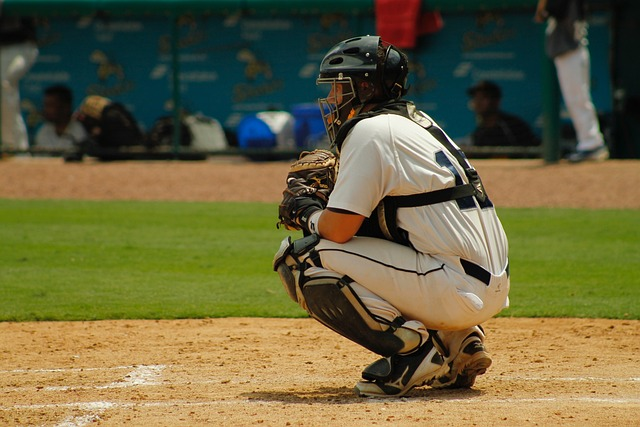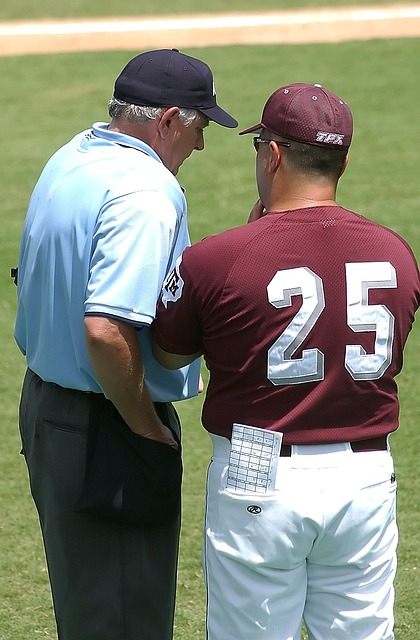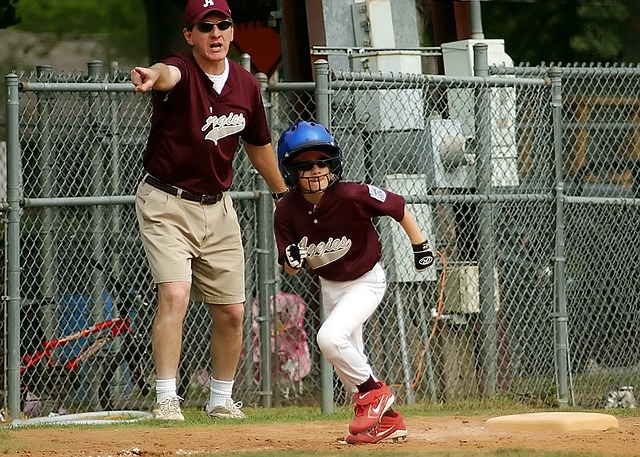
Failing to receive and perform the correct action the coach designates with the baseball signs had grave consequences in professional baseball. Many coaches I played for in the major league baseball and leagues applied monetary fines when players failed to follow the directives. Of course, at that level where every game is critical, one missed sign could be the difference between a win and a loss, it was an understandable penalty.
At the major league level, players can afford some monetary payments, but when in the minor leagues, it hurt to have to pay up as the pocketbook is quite small in minor league baseball. In college, for example, the punishment for missing the coach's directives was often running laps or sprints after the game. In high school, the cost of missed communication was a benching of the player when it happened often. At all levels, a verbal berating by the coach often came because coaches tend to be very competitive and missed signs may look bad for their coaching strategy to others. Of course, at the youth levels of baseball, fines and punishments are not appropriate, but coaching frustration is often evident for youth coaches, too. Coaches at the youth level are responsible for teaching inexperienced kids the important baseball signs, when and how to receive them. Seeing teams that learn the necessary communication skills are the sign of a well-coached baseball team, which should be every coach's goal.
Perhaps the first thought for many people when they hear the term baseball signs, especially non-baseball ones, is to think of the many billboards that they see at the ballpark or when watching MLB games on TV. Many sponsors of opposing ball teams have huge displays at the ball parks now, as do other teams as well as rotating baseball signs behind home plate when watching contests on the television.

Baseball is a game of strategy, and the art of communication is a vital aspect of the sport. The players and coaching staff use various methods to communicate on the field, and baseball signs are a fundamental part of this communication. These signs are used to indicate the type of pitch, the location of the pitch, the positioning of the pitcher throws the infielders, and the instructions for the runners on the bases.
The most common baseball signs are the hand signals used between the catcher and the pitcher when calling pitches. Before each pitch, the catcher uses hand signals to communicate the type and location of the pitch to the pitcher. These signals are often decided by the coaching staff, and the manager can be seen signaling the same sign sequence the catcher before the pitch. The catcher must understand and interpret the signs quickly to make the right pitch call.

In addition to the catcher-pitcher signs, the infielders also use signs to communicate with each other. They communicate their positioning and who will cover the bases in various game scenarios. These signs are critical to ensure that the team is on the same page and properly positioned to field the next hit the ball and make plays.
The third and first base coaches also use hand gestures to communicate with the runners on the bases. These signals indicate when to slide, when to throw, to keep running, and when to stop. The base runners must quickly interpret these signals to make the right decision and avoid being tagged out. It's vital that both are on the same page to have success.
Effective communication through signs is essential to the success of the team. Miscommunication can lead to missed opportunities, game losses, and frustration for coaches. Coaches must spend enough time practicing signs with their players, both giving hand signals and receiving the signals. The team must be able to quickly and accurately interpret the signs to execute the right plays and win the game.

The main offensive baseball plays for the base runner are the straight steal, the bunt, and the hit and run play, for which there must be an offensive signal. For beginners, the most common way basic signs system for youth ballplayers has coaches touch their hat for the hit and run play, their shirt for the steal, and their belt for the sacrifice bunt. Coaches should give these signals slow at first until players are used to seeing them and then they can work to disguise them as the season progresses. When signs are too obvious, it may tip the opposing team off to the strategy, and they can employ a play to disrupt the move.
More sophisticated, offensive plays like the delayed steal, double steal, suicide squeeze, safety squeeze and batter" take" require signals at the higher levels of baseball. Coaches can add the number of touches to those areas to designate different plays than the basics. There are many ways to disguise these baseball signs, with an indicator sign system or with wipe off signs, so the opposition does not pick up on them. Some communication systems are incredibly sophisticated at the higher levels of baseball that the coach has a different sign for the same desired action for each player.
Unfortunately, some of these baseball plays like the hit and run and steal are being used less and less in baseball history and the MLB, so the signs are used little now. On the defensive side of things, communication usually goes from the bench coach to the catcher. The catcher then messages the rest of the players for things like bunt coverages and defensive alignments. Coaches have many hand gestures that defensive players begin to pick up on over time like moving back, over, and in. Whatever the signal system used, it is necessary that the third base coach practice giving them, review these signs with same team and players before every game, and have players practice receiving them to avoid if the other team tries to steal signs. Following are some fun and useful ways to teach them valuable skills they will likely need when playing high school baseball.
A simple way to create an easy baseball sign for coaches is by using hot indicators and counting touches. Let me describe the process behind giving the baseball sign. We'll return on the right hand hat; this indicates ‘hot'. After the third base coach goes through several signs with the right finger touching the hood of their hat then the emphasis will be immediately after the hat touch. A quick touch on an hat is displayed in the place of its surface. The second touch after hat indicates steals. Three touches after the hat will be hit-runs. Simple but tough to have someone else take your sign away.
My experience has included coaching in some league all-star games in baseball. Occasionally the teams meet to talk about baseball plays before the game. Today everyone has been strangers to opponents, but they were good teams. So we have our defensive and offensive sides in mind for the Exhibition games. It is simple and quick. It is necessary to look at the first and third scenarios, bunt defenses, the pitchers and pitcher sign, the steal signs and the offensive sign. A quick and easier baseball clap system is required to display offensive signs. Yeah, clapping.

Drill 1 With players sitting on the bench in front of the baseball coach, coach flashes a sign and the first player to get it yells it out is the winner. Baseball coaches continue to go through the signs until it is apparent all players are beginning to yell out the given sign. Coaches can award the winning player with a baseball card, if desired, to spur others to study and concentrate on the baseball sign signaling signals.
Drill 2 Coach sets down a few extra bases behind first base, so more players get to base run at the same time and practice reading the signs at once. Coaches can have a single batter at home plate also to go through the motions of learning a few basic signs. The coach at third flashes the sign from the regular third base coaching box and observes how players react with the pitch. Players are not allowed to tell each other what sign if any, they received. Those that get the right sign will respond correctly, while those who didn't respond did not get the sign. Coaches can have other coaches as a pitcher, catcher, and first baseman to steal signs, or use regular players at the defensive positions, and use a ball or not. In the above manner, players get more practice reading the signs because it is difficult getting enough repetitions in game action, especially for players, who do not get on base nearly as much as others.
Drill 3 This one is fun. After a few weeks of teaching and reviewing the baseball signs, baseball coaches call upon a player to get up in front of the other team, and give the basic signs back to the team. It is fun as some opposing teams and kids will go through them differently. In this way though, players learn them even more.
Drill 4 As a follow up to the previous test, a baseball coach can assign a player to do the same thing from the third base coach box during a practice baseball game and allow the runner behind them to give the offensive baseball signs to baserunners. This activity is fun for the kids and coaches can ask the runners what signals they received from their own players and teammates.
Drill 5 During an intra-squad game, coaches stand in the dugout and give defensive signals before the next pitch and have players raise their hand after seeing the message. In this way, coaches teach players to at least occasionally look to the dugout for instructions. In time, coaches will not have Coaches must not only practice giving their baseball signs but also should spend time having players practice receiving them.
In conclusion, baseball signs are a critical part of effective communication, play, and strategy in baseball. Both offensive and defensive plays require clear and disguised signals from the coaching staff, which players must quickly interpret and execute and keep other teams from sign stealing. Coaches must practice giving and reviewing these signals with their players and use fun and interactive methods to teach them. By doing so, they can help their team perform at their best and achieve success on the field.
After playing major league baseball, Jack Perconte has taught baseball and softball since 1988 and offered valuable coaching training too. He has helped numerous youth players reach their potential, as well as having helped parents and coaches navigate their way through the challenging world of youth sports. Jack is one of the leading authorities in the areas of youth baseball training and coaching training advice.
All Jack Perconte articles are used with copyright permission.There are 0 comments on "Baseball Signs for Youth Players & Drills - (2023 Update)"
chandler allen says:
"Hi my name is chandler, i’ve enjoyed..."
On Wanting to tryout for summer ball. as an 18 year old
david graham says:
"With no current MLB team in Canada,..."
On With no current MLB team in
Charles Chavez says:
"To All Coaches: Do you have13U or..."
On Looking for Games